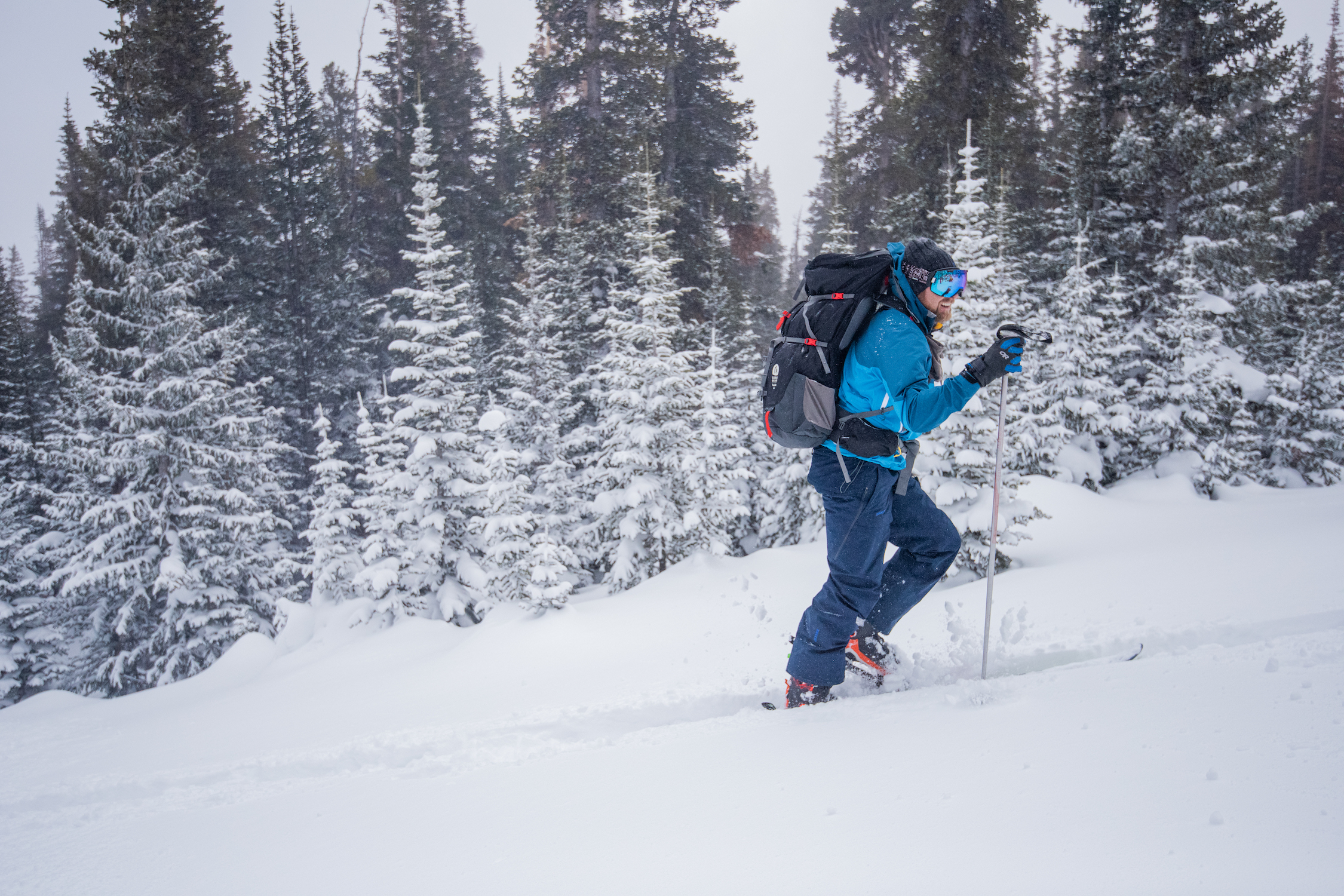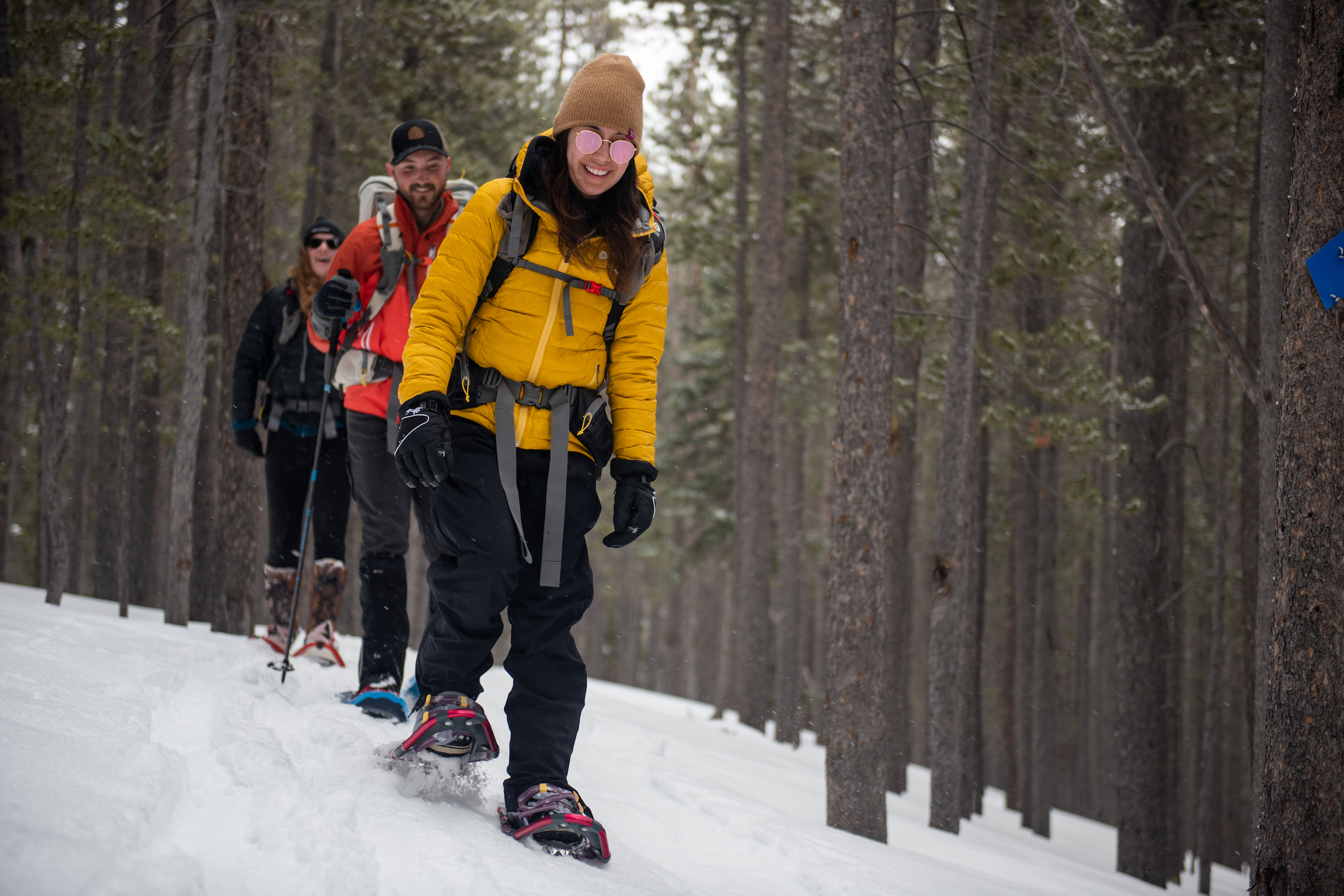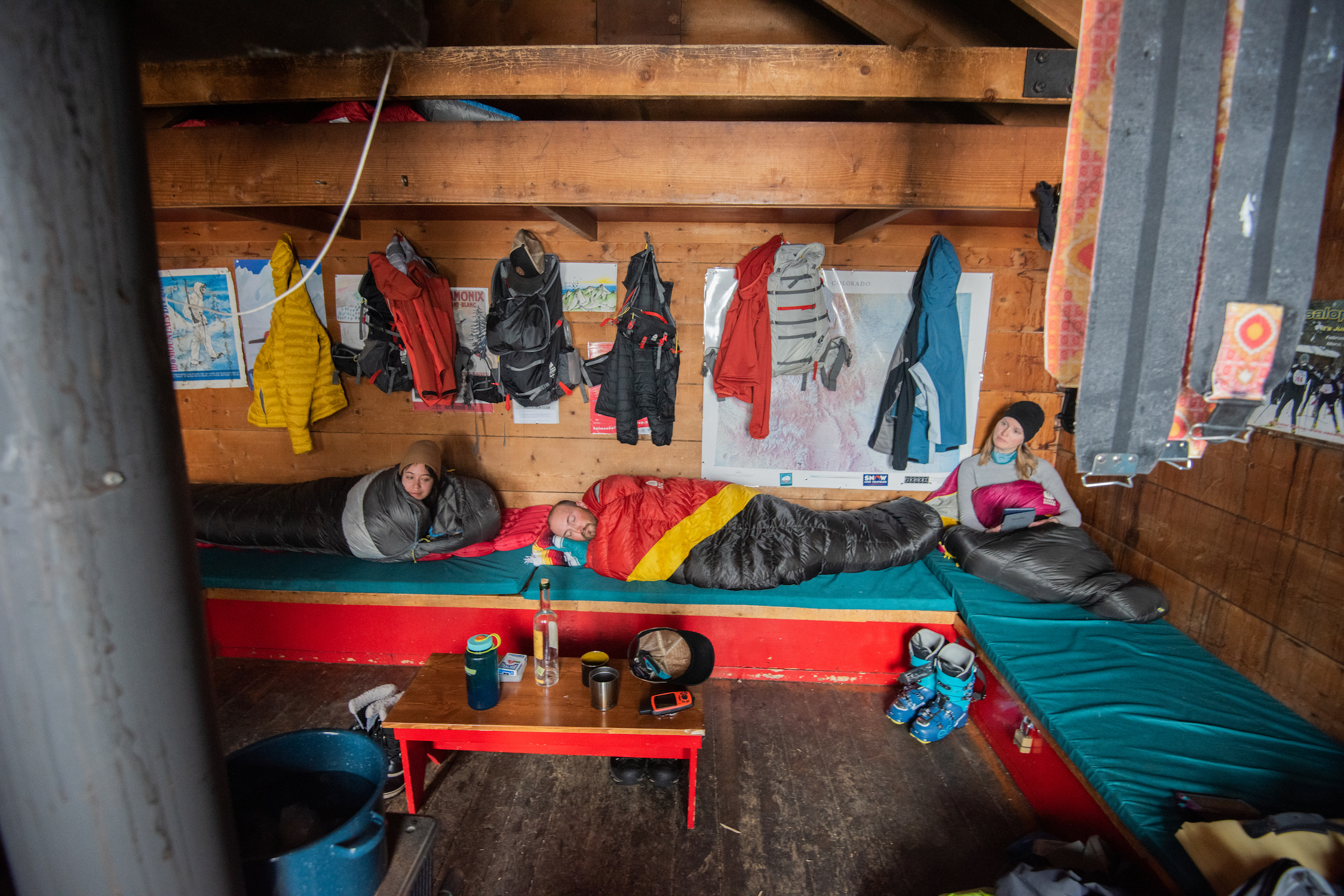Does the thought of remote trails and pristine powder against the backdrop of quiet and wild winter mountains excite you? Then base camping at a backcountry hut may be your ideal winter escape. But before you start packing up your gear and heading up the mountain, a hut trip isn’t your typical backcountry adventure. It takes a lot of planning, preparation and knowledge to successfully make it to your cozy mountain refuge.
Here are a few tips to help make the most of your trek into the serene winter wilderness.
Know Your Stuff
The backcountry in winter can be extremely unpredictable and dangerous. Weather can change in an instant, trail finding may be near impossible under the cover of snow and the danger of avalanches is a constant. However, with proper knowledge and preparation, you can mitigate most of these risks. There are lots of organizations that provide avalanche preparedness training, so make sure the members of your group have this knowledge. Study up on your course and brush up on your route-finding skills before you hit the trail. Bring a GPS as well as a topographic map and compass to help ensure you don’t get lost.

Pick Your Hut
With over 200 huts, lodges and yurts throughout North America there are plenty of stunning locations to decide on. Be conscious of your groups’ skill level, backcountry knowledge and fitness when choosing a hut. While it may be tempting to try and bag a challenging hut, remember that you may be facing much harsher conditions then during summer backcountry adventures. Once you hone in on your location, be prepared to make a reservation; with some of the more popular locations it may be necessary to make reservations months in advance.
Start Training
Hut trips can be a total sufferfest if you’re not physically prepared. You’re traveling across very technical, demanding backcountry, carrying a heavy pack and that doesn’t include the epic skiing you’ll do when you arrive, so it’s time to start training. Make sure you strap in and try out your gear, so you are comfortable when you head out, a blister is the last thing you want to get when you’re on the mountain for days on end. Steep climbs are the name of the game when heading out on a hut trip, so make sure to incorporate cardio into your workout routine. In the gym, focusing on leg and core exercises can ensure you have the strength and stamina to make it to your destination without being totally wrecked.

Gear Up
If you head to the backcountry on the regular, then you know that packing light can make the difference between a comfortable experience or a miserable trek. This is even more crucial when traveling in snow. The 10th Mountain Division Packing List is a great place to start when deciding upon your gear. Aside from your backcountry necessities (skis / snowshoes, skins, an avalanche beacon, shovel, and probe gloves, goggles, etc.) sunscreen, lip balm, and a buff are essential when facing days of snow and sun exposure. A repair kit with duct tape, screws, and extra ski straps can really save your bacon if any of your gear fails you. In case of emergency, a bivy or lightweight shelter can be a lifesaving piece of gear and won’t take up much room in your pack. A 20-35 degree sleeping bag, like our Cloud 20, will provide plenty of warmth for your stay, as most huts have a wood stove, and keep some weight off your back for the long haul in. An often forgotten luxury, Down Booties, will keep your toes toasty and comfortable after squeezing into ski boots for hours on end. In terms of what to wear, an extra set of base layers is key in case you get wet. In addition, a warm mid-layer and a waterproof outer layer will help keep out the elements and keep you comfortable. Most huts will have a list of basic essentials, but check in with the hut master and be prepared to pack in toilet paper, hand sanitizer, an axe for wood cutting, oil for cooking, etc.

Reduce Your Impact
Backcountry huts have been a resource and refuge for skiiers, snowshoers, and hikers for many years. It’s imperative that you reduce your impact to both the environment and the hut, to allow these places to be shared for many more years to come.
- · Pack it in, pack it out. This is not only important to be courteous to the next guests, but also a way to prevent pest problems at the hut. Leave No Trace can provide all best practices to reduce your impact to the environment.
- · Practice good sanitation. In the winter, the snow surrounding the hut is used for drinking water, so make sure you use the provided facilities to avoid contaminating the area for yourself and others.
- · Clean up after yourself, especially when you leave the hut.
- · Conserve power and propane. Huts often have a finite amount of power and gas, so make sure you use only what you need.
- · Never leave food outside. This keeps the animals we love wild.
- · Bring your own pillowcase.
- · It is common courtesy to leave the hut with a full wood pile, a cleaned-out stove, and a clean and full water pot, so the next guests can enjoy the cabin promptly upon their arrival.
- · Follow the security protocol when you leave, make sure you lock all doors and windows.
With these tips and a lot of hard work, the magic of waking up in the middle of a winter wonderland, away from the distractions and worries of the modern world, can be yours to experience delight in.



